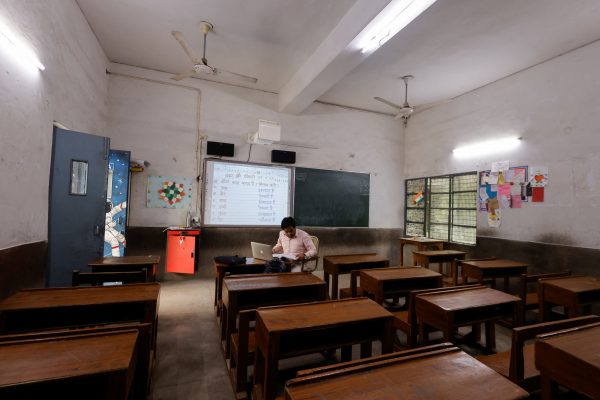India, in short, is in its demographic prime. In order to capitalise on its potential, however, it must find productive employment for its enormous working-age population. In theory, at least, this ought not pose much of a challenge. China — facing a much different, much less favourable demographic reality — is looking increasingly likely to vacate its position as the world’s factory, owing to higher labour costs and a need to rebalance towards domestic consumption.
With the right policy settings, India could snatch a share of China’s low-cost manufacturing sectors, just as the East Asian Tigers once moved into labour-intensive sectors in which Japan could no longer effectively compete when wages grew too high and Japan’s comparative advantage shifted higher up the value chain. This is an opportunity that other countries in Asia, particularly Vietnam and India’s neighbour Bangladesh, have seized.
India, though, seems to be struggling. As Radhicka Kapoor writes in this week’s lead article, ‘India’s idiosyncratic structural transformation from agriculture to services — leapfrogging the phase of manufacturing growth — has generated limited opportunities for well-paid employment for those at the lower end of the education and skills ladder’.
The country’s manufactured exports are increasingly concentrated in high-technology goods produced by highly skilled workers — and while these jobs are very good for those who have them, an economic specialisation in capital-intensive exports will not allow India to find formal-sector work for all of its young people.
In order to change this trajectory, far-reaching policy reform is required. Yet in many important areas, India seems to be going backwards.
Contrary to initial hopes, Prime Minister Narendra Modi has not yet been able to drive the kind of far-reaching liberalisation that India needs if it is to reach its potential as the next great manufacturing giant of Asia. While his government made promising progress on several key economic issues, particularly in its first term, there has been a marked retreat from reform in the latter half of its second term. India’s decision to withdraw from the Regional Comprehensive Economic Partnership was a depressing return to diplomatic form for New Delhi, prioritising unjustified concerns about bilateral trade deficits over deeper regional integration.
Indeed, the ‘Make in India’ slogan, under the banner of which Modi’s government set out to jumpstart Indian manufacturing, has in recent years implicitly become ‘Make for India’: New Delhi seems to operate on the assumption that the size of the Indian market is now so vast that rapid manufacturing growth can occur simply by satisfying local demand through a process of import-substituting industrialisation.
The problem is that India has tried this strategy before and got slow growth in return. Neither South Korea, nor China, nor any of the East Asian miracle economies got rich by turning inwards. All relied on export-oriented manufacturing to drive growth, sometimes after disappointing experiments in import substitution, which taught them a simple lesson — turning inwards is a recipe for stagnation. Neither history nor economic theory offer reason to hope that India will succeed where they failed.
Can India turn things around before it squanders its demographic dividend? According to Kapoor, the necessary reform agenda encompasses several essential points — an effort to encourage more formal sector firms into labour-intensive manufacturing, a parallel effort to raise labour productivity, and measures to encourage an increase in female labour force participation.
If India fails to adopt deep structural reform in each of these areas, it will fail to capture the dividends of its demographic boom, and probably fail to achieve Modi’s ambitious goal of becoming a developed country by 2047, the centenary of its independence from British rule.
The ‘demographic dividend’ comes with an expiry date. It is the temporary product of a demographic transition to permanently lower birth rates, and — as China and other East Asian economies are now experiencing — it is generally followed by a period of population ageing that has profound fiscal and social consequences. India has time before it reaches the point at which its ageing population will drag down growth rates, but that moment will come.
If Indian politicians miss the window of opportunity to realise the country’s latent comparative advantage in labour-intensive, export-oriented manufacturing, then the country will have to deal with population ageing without the economic resources that successful industrialising nations like China now have. It is perhaps one of the most pressing economic challenges in the world to ensure that Indians grow rich before they grow old.
The EAF Editorial Board is located in the Crawford School of Public Policy, College of Asia and the Pacific, The Australian National University.

